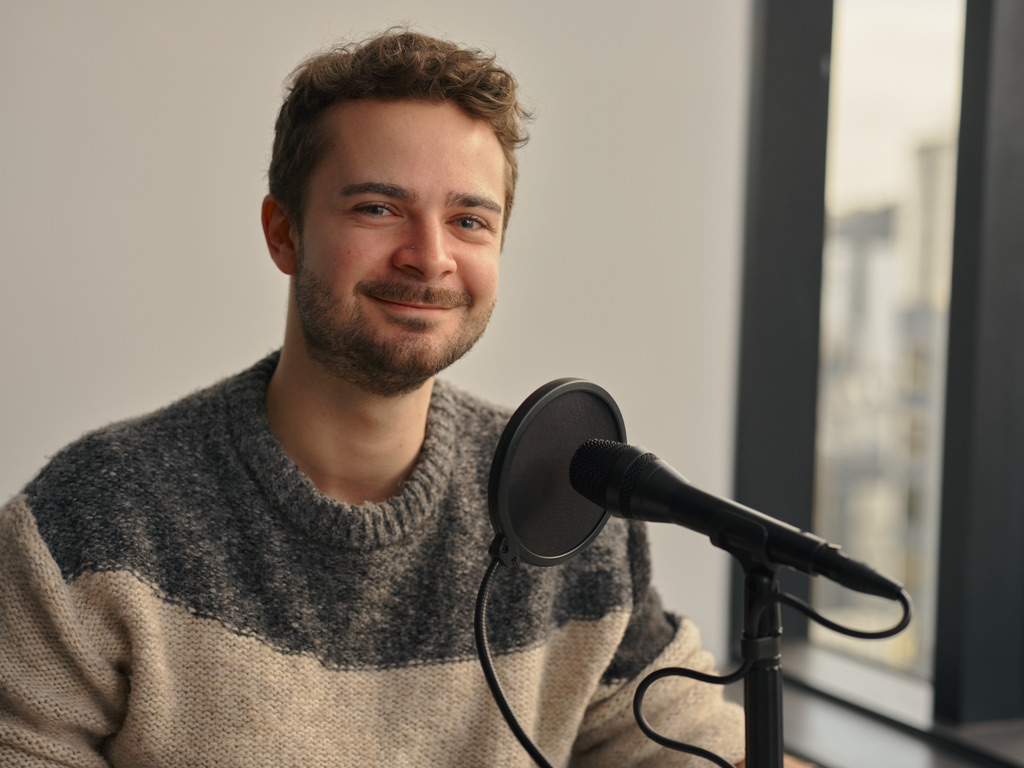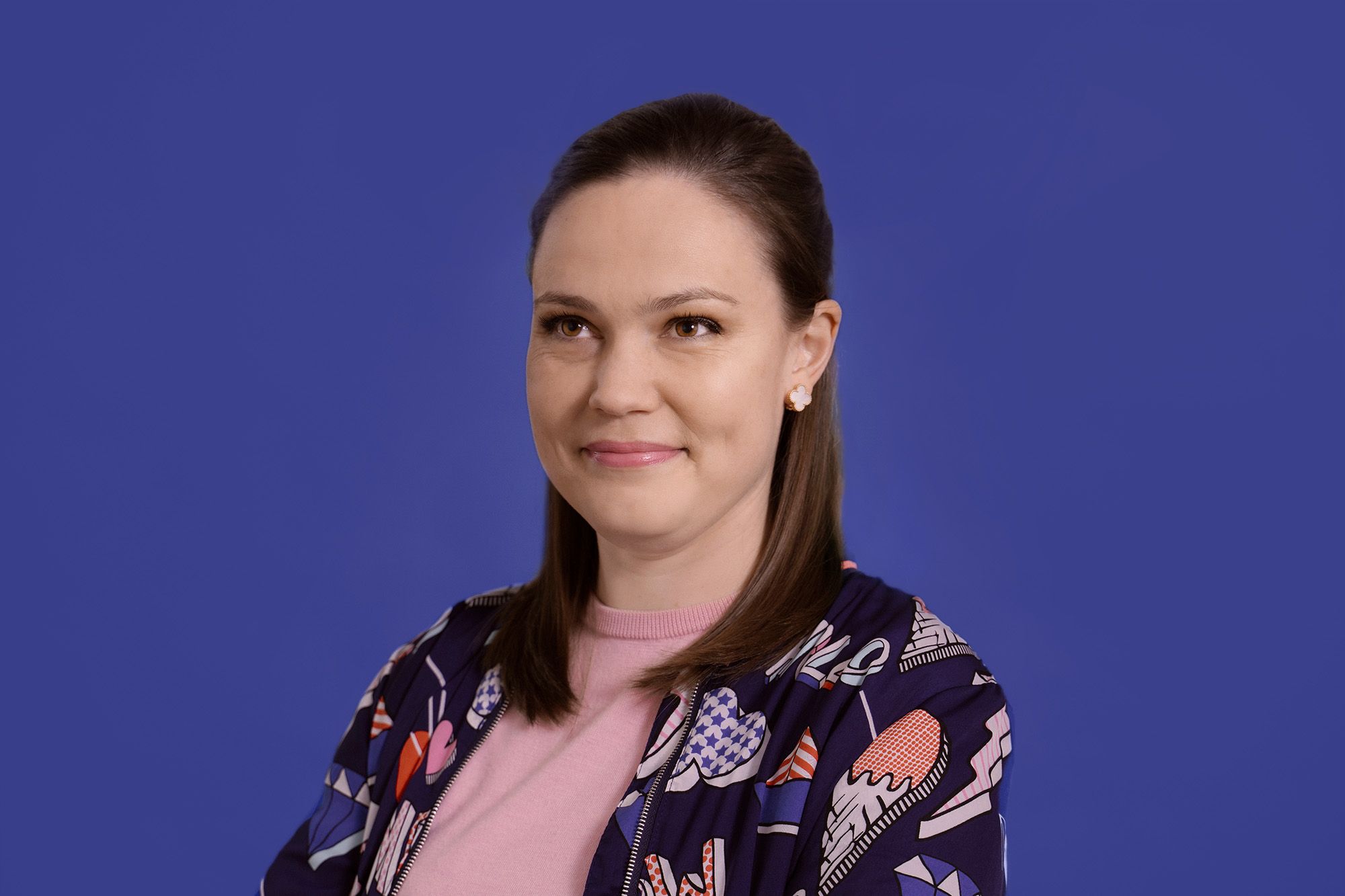It’s a job where knowledge of Tolkien character names may come in handy – but it’s bringing 180,000 blind or low-vision Kiwis back into the cultural conversation
– By Matthew Scott, Newsroom. Read the full article here: https://www.newsroom.co.nz/one-fifth-of-kiwis-need-audio-described-television.
It’s been a busy past few years for accessibility non-profit Able, especially for people like Virginia Philp, who leads the team of audio describers laying down commentary on broadcast content for the blind and low-vision community.
Since an increase in funding in 2020, the organisation’s output of audio descriptions has increased by 148 percent, covering almost a third of everything on TVNZ’s channels.
Seven percent of New Zealanders watch TV with audio description. It’s a proportion set only to increase with the country’s ageing population and age-related macular degeneration (AMD) being the leading cause of blindness and low vision.
Blind Low Vision NZ projects 352,000 Kiwis will have AMD by the end of the decade.
While in countries like Australia widespread audio description has only been in play since 2020, Able has been doing it since 2011.
But despite comprehensive coverage of content from our public broadcaster, some challenges could lie ahead when it comes to covering the access needs of a population getting its media from steadily diversifying sources, often with multiple going at a time.
Technical difficulties have made it hard to provide the service for live broadcasts or move it onto TVNZ+, while big modern media providers like YouTube and TikTok aren’t covered by any obligation to provide access to the low-vision community.
Philp has been on the job since the beginning, moving from a captioning role to providing audio description for everything from Country Calendar to game shows.
The job requires watching the piece of media and noting spaces between dialogue, before going back and recording a narration describing visual elements of the piece that could otherwise be lost on the 180,000 New Zealanders who are blind or have low vision.
She sees it as more than just access to entertainment or important information, but rather a licence for disabled people to take their place in broader society.
She gives the example of Celebrity Treasure Island – now a constant talking point on the radio, in gossip columns and on social media. Like an All Blacks game or a Taika Waititi film, things like this become broader cultural artefacts serving as sites of public discourse.
Philp says the blind and low-vision community deserve to be a part of this conversation just as much as anybody else.
“In general it’s a service that people don’t really know about,” she said. “It’s not our place to limit people’s enjoyment of TV in any way – it’s about giving everybody the option.”
Able chief executive Dan Buckingham has been on the job for just five months, coming from hosting and serving as CEO for Attitude Pictures Ltd, the production company specialising in telling the stories of the disabled community.
As a disabled person himself, it’s an example of organisations like Able taking the ‘nothing about us without us’ motto of the disabled community to heart.
The non-profit is funded to the tune of $4.9 million a year by NZ On Air Irirangi Te Motu, and Buckingham says the goal is to keep expanding to audio-describe a broader range of channels and platforms.
“What’s holding us back is broadcasting capability,” he says. While a platform like Netflix has deep enough pockets to provide a hefty percentage of its content with audio description, that’s not always the case for TVNZ+.”
Buckingham hopes the advent of Aotearoa New Zealand Public Media, the united public media entity that will exist following the Cronenberg-esque fusion of RNZ and TVNZ, will see more chances for widespread audio description.
“It’s such a great unknown. I think that provides a lot of insecurity for the industry, but at the same time it’s future-proofing against a future where there are so many other people and companies coming in and taking up people’s attention span,” he says. “What is going to be developed in the next five to 10 years is fascinating.”

Access options are growing in popularity around the world. Netflix reports 40 percent of its global user base regularly use subtitles, and Buckingham says the young in particular seem to be picking up on the usefulness of captioning.
“That’s what we see from Generation Z talking about a lot – there’s a huge uptick in the increase in use of captions,” he says. “I do think audio description will follow, I think that’s the next one that will get a lot of press about getting more immersive in the content as our attention spans continue to get hit… people will have that on as default.”
But as it is with legally mandated captioning, New Zealand lags behind other countries in the OECD when it come to laws that obligate broadcasters to provide audio description. The New Zealand Government Web Accessibility Standard only requires audio description for pre-recorded videos containing high-stakes information.
In the United Kingdom, broadcasters that have been on the air for five or more years have to broadcast at least 10 percent of their content with description, with some level of scrutiny applied to the quality of the commentary itself.
ESPN UK was fined £120,000 back in 2012 for failing to provide proper audio description. When the sports channel’s legal representatives argued that sports commentary filled the same purpose, communications regulator Ofcom rejected the argument, saying such commentary is “not provided with the needs of the visually impaired in mind”.
Meanwhile, in the USA the Federal Communications Commission (FCC) orders broadcasters to provide 87.5 hours of described programming per calendar quarter – around an hour a day.
But the rules don’t apply to streaming services, which are often able to exist outside the stable of media regulation established in the 20th Century.
Buckingham says the universal design of an accessibility focus is good for everyone.
“Seeing yourselves on screen is so important for our language and our culture, and everyone should be able to experience that,” he says. “By capturing for the edges you grab everyone.”
In celebration of World Sight Day today, Wellington Paranormal’s Karen O’Leary is providing the audio description for today’s episode of Shortland Street, in a partnership Able has made with TVNZ and South Pacific Pictures. She said one of the main purposes was to make people aware that the service was available.
Philp says playing a part in making broadcast content accessible for all is gratifying work.
“I have to admit it does feel good to provide a service that provides some enjoyment for others,” she said.
It’s a job with some odd challenges, and the recorders need to play to their strengths.

Programmes with wall-to-wall dialogue are hard to record descriptions for, and coming in cold to the more intricate and sprawling of films and television can be onerous.
“At the moment on TV2, the Lord of the Rings movies are repeating and they want the audio described. Unfortunately, I surprisingly know nothing about Lord of the Rings. I went to the first film and don’t really remember it because I dozed off,” she says. “It would be quite amiss for me to come along and try to audio-describe something like Lord of the Rings without prior knowledge… it helps if you have a wide appreciation and understanding of popular culture and television and film in general.”
Being clued up enough on the lore of every piece of pop culture that passes through the recording booths at Able is a team effort. Philp says there are team members who know about Marvel movies, and another who is well-versed on the ins and outs of Doctor Who.
For Philp herself, she says she’s got a good working knowledge of the London geography and landmarks, which helps her describe what’s going on in the fair amount of British programming that our public broadcaster picks up.
And for the 180,000 New Zealanders in the blind or low-vision community, it’s work that allows them to participate in one of the great Kiwi pastimes of the past 100 years – watching television.





